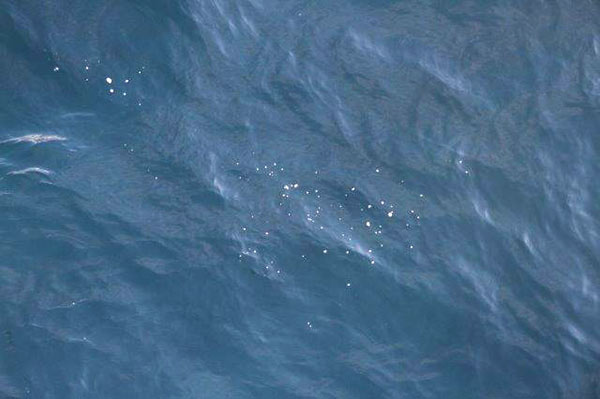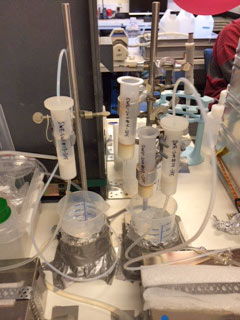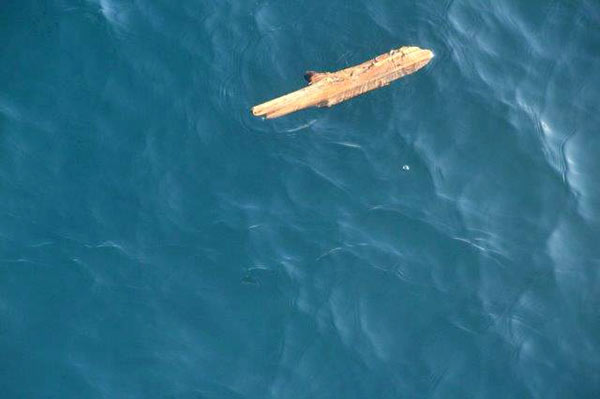|
We have been moving across the Laptev Sea. On a line towards the Lena River. It strikes me as to how different it is to observe a phenomenon in real life from reading about it. Of course, for a novel or story it can be quite obvious this difference, but you know – the same goes for science too. I have been writing about the Lena River, and how it affects the waters of the Laptev Sea in my research. Now we have seen the methane plume ourselves through this trip. We started in colder more saline water and suddenly the readings on all instruments shows an increased temperature with several degrees and much less salt in the water (river water is fresh water – it has a much lower salinity). One moment you look at the info screen – aha 34xxx , and then we are down to 26,xxx. We were all very excited down in the main lab. Look! The water around the Oden changed colour. From a more oceanic blue (with much less nutrient content) to a darker blueish-brown colour. We also saw debris from the land. I could even identify a piece of birch from the characteristic pattern of the bark. Cool!
We have earlier made our way through a sampling area that is a methane vent hotspot. We could spot bubbles in the water even from just watching over the railing. There was this one moment when we were up on the bridge a few of us together with the chief scientists and were observing very high methane levels in the water, and someone asked if we could go down to see if we can see the bubbles from the front of the ship… I thought they were joking, but not at all. Bubbles were visual and the amazing thing (or alarming thing? I don´t know) is that this is the same area that they have observed methane venting many years ago. And there are still methane seeps!. How much and what possible effects it could have I hope that we can jointly give some answers to through this massive research effort that is being undertaken here. I am proud to be part of it.
My work in the main lab has continues. We had a part of the methane hot spot area where we were going over the same narrowish area and we thus had a pause in the surface water filtrations – because the surface water is not so different in a smaller area. So we had the occasional samples, but instead I got to be a larger part of Julia Steinbach’s team. This was a great experience, and I learnt a great deal of new little things as well as got to help out.

Today and yesterday I have been back full time and more in the filtration corner. This transect that we are doing now has several stations in a row where we have deployed the submersible pump every station as well as filtrating surface water through the sea water intake. This means detailed planning of how and when to start what filtration system and scheduling your time. Very intense for us. On my night shift I even recruited the chief scientist Igor Semiletov to join in, and he happily helped with retrieving the submersible pump.

I must say – though it is intense and you need to concentrate even if you’re very very tired on order to get things right, I enjoy the hard work. It’s better to have tonnes of work than no work at all!
Now I have just had breakfast (at dinne time) and I am off to bed. Tonight after I have slept, and worked a few more hours on my afternoon shift there awaits a mid-way dinner! I am greatly looking forward to it. I’ve already asked the cook about what it’s going to be and it’s worth waiting for!

|

















